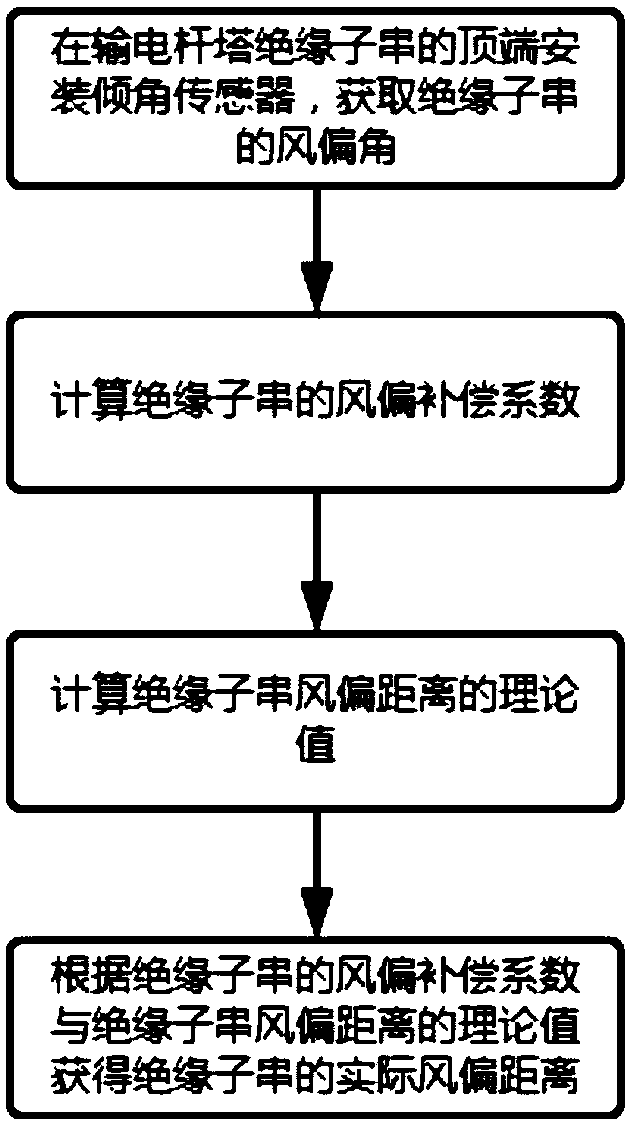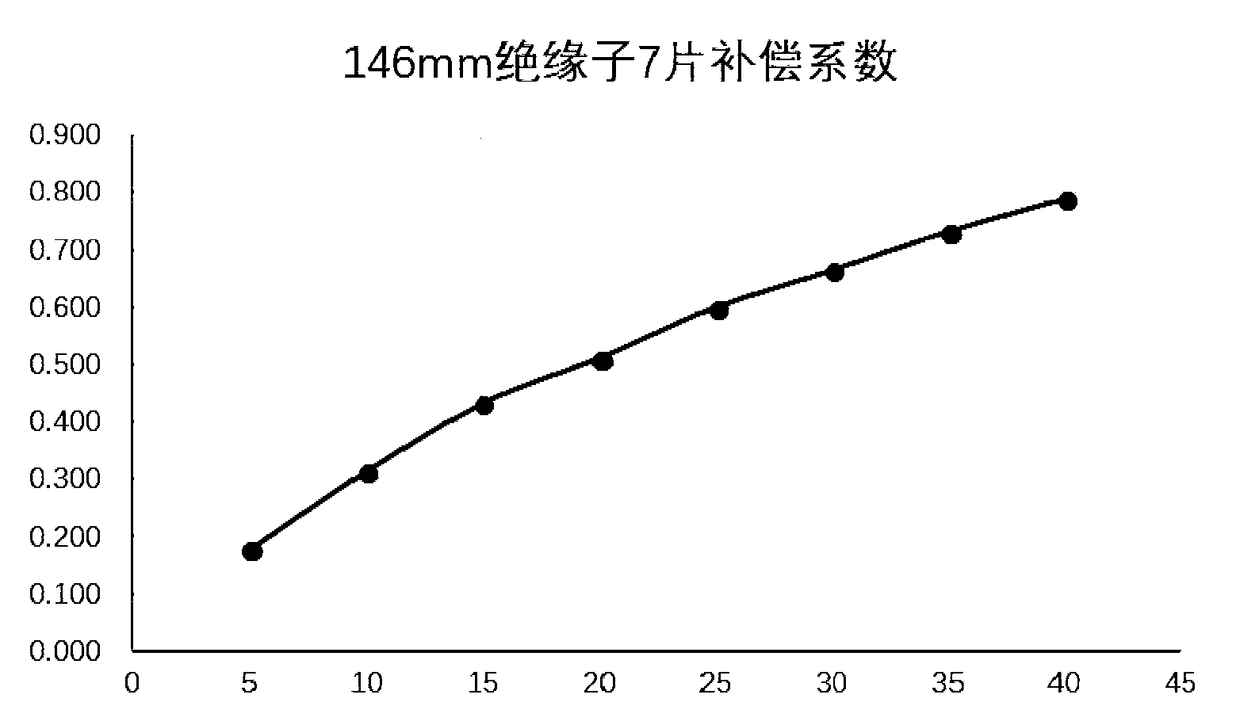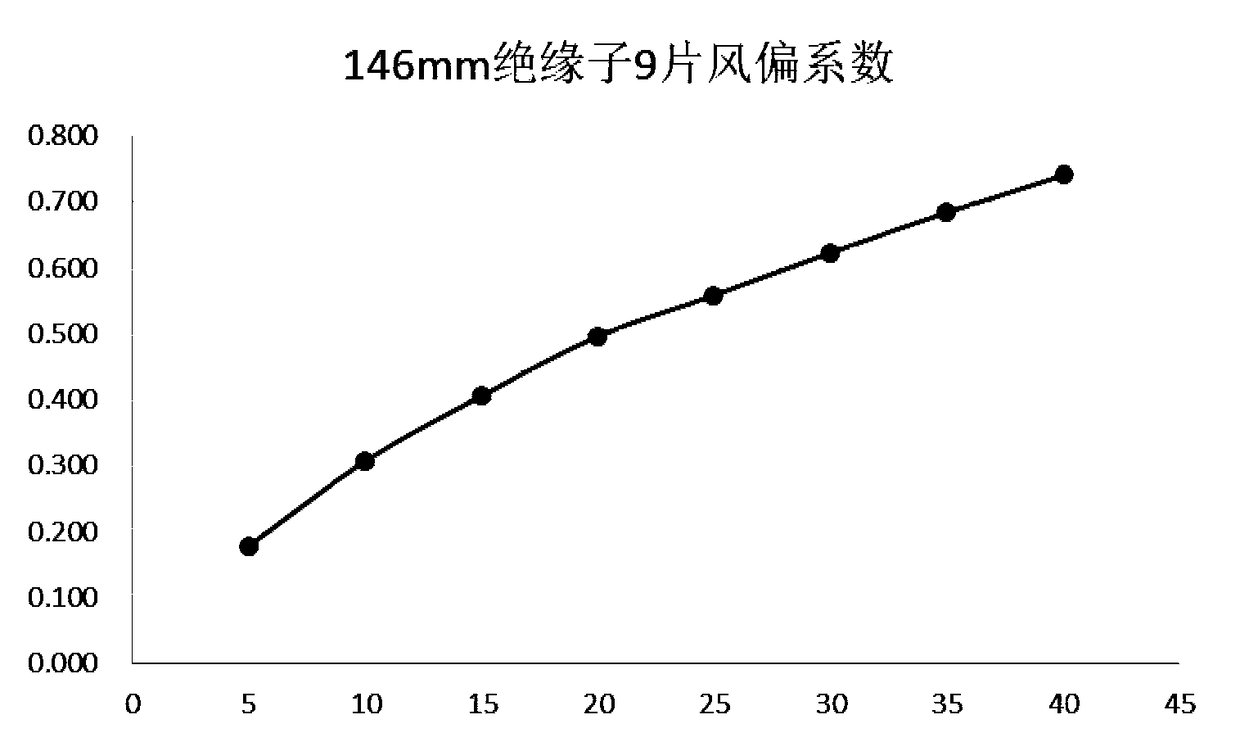A method for calculate that wind deviation distance of insulator string
A technology of insulator strings and calculation methods, applied in complex mathematical operations, measuring devices, instruments, etc., can solve problems such as large errors and errors, and achieve the effect of real and effective data, convenient data acquisition, and simple calculation process
- Summary
- Abstract
- Description
- Claims
- Application Information
AI Technical Summary
Problems solved by technology
Method used
Image
Examples
Embodiment 1
[0038] see figure 1 and Figure 10 , a method for calculating the windage distance of an insulator string, comprising the following steps:
[0039] S1. Obtain the windage angle of the insulator string of the transmission pole tower. Since the insulator string is generally connected to the transmission pole tower through a ball-end hanging ring, in this embodiment, the windage angle of the insulator string is obtained by setting an inclination sensor on the ball-end hanging ring , and at the same time, when it is inconvenient to install an inclination sensor, the existing windage calculation formulas for those skilled in the art can also be used to calculate the windage angle.
[0040] S2, calculating the wind deflection compensation coefficient of the transmission tower insulator string, the calculation method of the wind deflection compensation coefficient of the transmission tower insulator string includes the following steps:
[0041] S21. In order to simulate the windage...
Embodiment 2
[0057] The difference between this embodiment 2 and embodiment 1 is that 7, 9, and 14 pieces of 155mm insulators are respectively selected to form an insulator string. The data at 30°, 35°, and 40° are made into Table 2, and obtained as Figure 5 , Figure 6 , Figure 7 The compensation coefficient curve shown in Table 2 is as follows:
[0058] Table 2 Measurement data of 155mm insulator string
[0059]
[0060]
Embodiment 3
[0062] The difference between this embodiment 3 and embodiment 1 is that 7 or 14 insulators of 170 mm are selected to form an insulator string, because when 170 mm insulators form a 14-piece insulator string, the weight is too large, and it is difficult to achieve a windage angle of more than 30°. For the convenience of calculation, the data of the 170mm insulator string composed of 7 pieces are selected at the inclination angles of 5°, 10°, 15°, 20°, 25°, 30°, 35°, 40° and the 170mm insulator string composed of 14 pieces The data of the strings at the inclination angles of 5°, 10°, 15°, 20°, 25°, and 30° are made into Table 3, and obtained as Figure 8 , Figure 9 The compensation coefficient curve shown in Table 3 is as follows:
[0063] Table 3 Measurement data of 170mm insulator string
[0064]
PUM
| Property | Measurement | Unit |
|---|---|---|
| Height | aaaaa | aaaaa |
Abstract
Description
Claims
Application Information
 Login to View More
Login to View More - R&D
- Intellectual Property
- Life Sciences
- Materials
- Tech Scout
- Unparalleled Data Quality
- Higher Quality Content
- 60% Fewer Hallucinations
Browse by: Latest US Patents, China's latest patents, Technical Efficacy Thesaurus, Application Domain, Technology Topic, Popular Technical Reports.
© 2025 PatSnap. All rights reserved.Legal|Privacy policy|Modern Slavery Act Transparency Statement|Sitemap|About US| Contact US: help@patsnap.com



